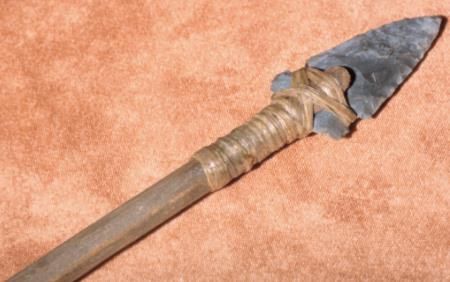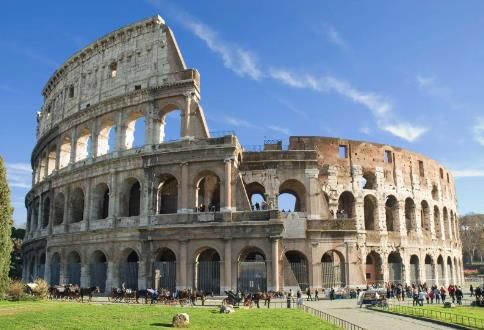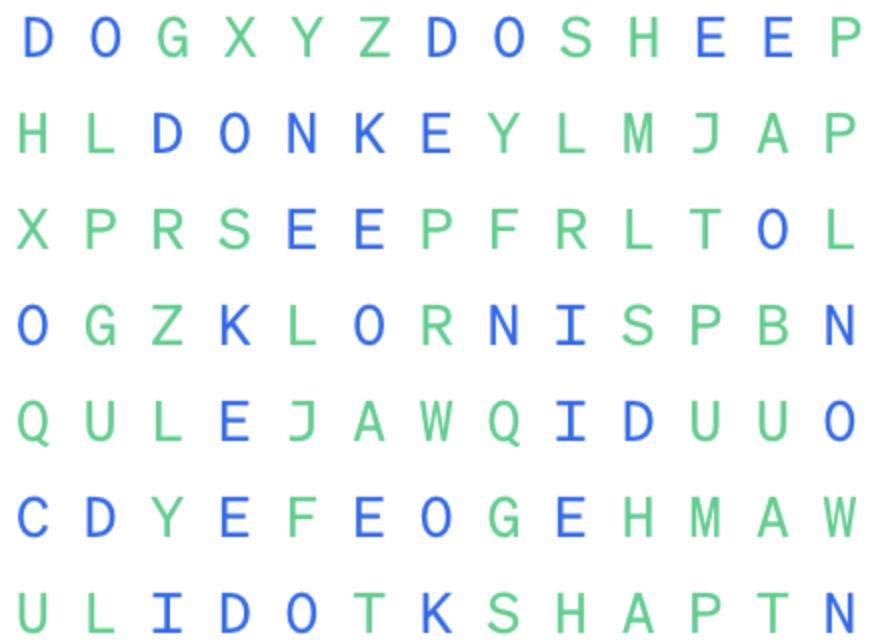All Exams >
Grade 2 >
History for Grade 2 >
All Questions
All questions of Early Civilizations for Grade 2 Exam
Matching Facts about Early Human Civilization:
a. Mesopotamia
b. Indus Valley
c. Nile Valley
d. Mesoamerica
i. Known for the development of a sophisticated writing system called cuneiform.
ii. Home to the ancient Harappan civilization with well-planned cities like Mohenjo-Daro.
iii. Flourished along the banks of the river Nile, with the pyramids being a prominent feature.
iv. Present-day Mexico and Central America, known for pyramids and complex societies.
- a)a. - ii, b. - iii, c. - i, d. - iv
- b)a. - iii, b. - ii, c. - i, d. - iv
- c)a. - i, b. - ii, c. - iii, d. - iv
- d)a. - iv, b. - i, c. - iii, d. - ii
Correct answer is option 'C'. Can you explain this answer?
Matching Facts about Early Human Civilization:
a. Mesopotamia
b. Indus Valley
c. Nile Valley
d. Mesoamerica
i. Known for the development of a sophisticated writing system called cuneiform.
ii. Home to the ancient Harappan civilization with well-planned cities like Mohenjo-Daro.
iii. Flourished along the banks of the river Nile, with the pyramids being a prominent feature.
iv. Present-day Mexico and Central America, known for pyramids and complex societies.
a. Mesopotamia
b. Indus Valley
c. Nile Valley
d. Mesoamerica
i. Known for the development of a sophisticated writing system called cuneiform.
ii. Home to the ancient Harappan civilization with well-planned cities like Mohenjo-Daro.
iii. Flourished along the banks of the river Nile, with the pyramids being a prominent feature.
iv. Present-day Mexico and Central America, known for pyramids and complex societies.
a)
a. - ii, b. - iii, c. - i, d. - iv
b)
a. - iii, b. - ii, c. - i, d. - iv
c)
a. - i, b. - ii, c. - iii, d. - iv
d)
a. - iv, b. - i, c. - iii, d. - ii

|
Torcia Education answered |
Option C correctly Matches Facts about Early Human Civilization:
What early writing system, characterized by wedge-shaped marks on clay tablets, was used by the ancient Sumerians?- a)Hieroglyphics
- b)Cuneiform
- c)Sanskrit
- d)Phoenician
Correct answer is option 'B'. Can you explain this answer?
a)
Hieroglyphics
b)
Cuneiform
c)
Sanskrit
d)
Phoenician

|
Nclex Coaching Centre answered |
Cuneiform, the earliest known form of writing, was developed by the ancient Sumerians in Mesopotamia, employing wedge-shaped symbols impressed onto clay tablets, serving as a medium for administrative, economic, and literary purposes.
Identify the weapon commonly used by early humans.
- a)Hammer
- b)Axe
- c)Spear
- d)Knife
Correct answer is option 'C'. Can you explain this answer?
Identify the weapon commonly used by early humans.

a)
Hammer
b)
Axe
c)
Spear
d)
Knife

|
Bespoke Classes answered |
Early humans primarily used spears as their primary hunting and defense weapon. The spear was a versatile tool, crucial for hunting large game and for self-defense against predators. Its design and effectiveness played a pivotal role in the survival and evolution of early human societies.
Which ancient civilization, known for its philosophy, literature, and art, flourished in the region of modern-day Greece?- a)Mesopotamia
- b)Ancient Egypt
- c)Greek Civilization
- d)Indus Valley Civilization
Correct answer is option 'C'. Can you explain this answer?
a)
Mesopotamia
b)
Ancient Egypt
c)
Greek Civilization
d)
Indus Valley Civilization

|
Nclex Coaching Centre answered |
The Greek Civilization, encompassing renowned city-states like Athens and Sparta, flourished in the region of modern-day Greece, making significant contributions to philosophy, literature, art, and democracy, leaving an indelible mark on Western civilization.
Which ancient city, known for its advanced urban planning and drainage system, is associated with the Harappan civilization?- a)Mohenjo-Daro
- b)Athens
- c)Rome
- d)Babylon
Correct answer is option 'A'. Can you explain this answer?
a)
Mohenjo-Daro
b)
Athens
c)
Rome
d)
Babylon

|
Nclex Coaching Centre answered |
Mohenjo-Daro, an ancient city of the Harappan civilization, is celebrated for its sophisticated urban planning, including well-organized streets and an efficient drainage system, reflecting the ingenuity of ancient urban planners.
The ancient Silk Road connected which two ancient civilizations through trade routes?- a)Roman and Greek
- b)Persian and Egyptian
- c)Chinese and Indian
- d)Maya and Aztec
Correct answer is option 'C'. Can you explain this answer?
a)
Roman and Greek
b)
Persian and Egyptian
c)
Chinese and Indian
d)
Maya and Aztec

|
Bespoke Classes answered |
The ancient Silk Road was a network of trade routes connecting the East and West, primarily facilitating trade between the Chinese and Indian civilizations. This trade route played a vital role in cultural exchange, economic development, and the dissemination of goods, ideas, and technologies between these two ancient civilizations.
The ancient civilization that developed the calendar based on a 365-day year is __________.- a)Inca Empire
- b)Ancient China
- c)Maya Civilization
- d)Sumerians
Correct answer is option 'C'. Can you explain this answer?
a)
Inca Empire
b)
Ancient China
c)
Maya Civilization
d)
Sumerians

|
Nclex Coaching Centre answered |
The Maya Civilization developed a sophisticated calendar system based on advanced astronomical knowledge, resulting in a calendar with a 365-day year. This remarkable achievement underscores the Maya's profound understanding of celestial phenomena and their cultural significance.
Which ancient civilization is known for its impressive pyramids, such as the Great Pyramid of Giza?- a)Mesopotamia
- b)Indus Valley
- c)Ancient China
- d)Ancient Egypt
Correct answer is option 'D'. Can you explain this answer?
a)
Mesopotamia
b)
Indus Valley
c)
Ancient China
d)
Ancient Egypt

|
Nclex Coaching Centre answered |
Ancient Egypt is renowned for its remarkable pyramids, including the iconic Great Pyramid of Giza, which stands as a testament to the architectural prowess and cultural legacy of ancient Egyptian civilization.
The city of Rome was the capital of which ancient civilization known for its vast empire?- a)Persian Empire
- b)Roman Empire
- c)Greek Empire
- d)Inca Empire
Correct answer is option 'B'. Can you explain this answer?
a)
Persian Empire
b)
Roman Empire
c)
Greek Empire
d)
Inca Empire

|
Bespoke Classes answered |
Rome served as the capital of the mighty Roman Empire, a dominant civilization renowned for its expansive territorial conquests, sophisticated governance, and enduring cultural legacy.
Which ancient civilization developed the concept of zero and a decimal system in mathematics?- a)Indus Valley
- b)Ancient China
- c)Ancient Greece
- d)Maya Civilization
Correct answer is option 'A'. Can you explain this answer?
a)
Indus Valley
b)
Ancient China
c)
Ancient Greece
d)
Maya Civilization

|
Nclex Coaching Centre answered |
The Indus Valley civilization made significant contributions to mathematics, including the development of the concept of zero and a decimal system, reflecting their advanced understanding of mathematical principles and numerical notation.
Identify as one of the Seven Wonders of the Ancient World?
- a)Statue of Liberty
- b)Pyramids of Giza
- c)The Colosseum
- d)Hanging Garden of Babylon
Correct answer is option 'C'. Can you explain this answer?
Identify as one of the Seven Wonders of the Ancient World?

a)
Statue of Liberty
b)
Pyramids of Giza
c)
The Colosseum
d)
Hanging Garden of Babylon

|
Bespoke Classes answered |
The famous site given in the picture is The Colosseum.
Which ancient civilization is known for its advanced knowledge of astronomy and mathematics?- a)Inca Empire
- b)Ancient China
- c)Maya Civilization
- d)Sumerians
Correct answer is option 'C'. Can you explain this answer?
a)
Inca Empire
b)
Ancient China
c)
Maya Civilization
d)
Sumerians

|
Bespoke Classes answered |
The Maya Civilization is renowned for its sophisticated understanding of astronomy and mathematics. They developed a complex calendar system based on advanced astronomical observations, including a 365-day year. The Maya's astronomical achievements are evidenced by their precise calendar system and impressive architectural alignments with celestial events.
The Maurya and Gupta Empires flourished in which present-day country?- a)India
- b)China
- c)Iran
- d)Greece
Correct answer is option 'A'. Can you explain this answer?
a)
India
b)
China
c)
Iran
d)
Greece

|
Bespoke Classes answered |
Both the Maurya and Gupta Empires were ancient empires that thrived in present-day India. These empires played significant roles in shaping the cultural, political, and economic landscape of the Indian subcontinent during their respective periods.
The Neolithic Revolution is associated with the transition from nomadic hunting and gathering to what major development?- a)Invention of the wheel
- b)Discovery of fire
- c)Domestication of animals and farming
- d)Invention of writing
Correct answer is option 'C'. Can you explain this answer?
a)
Invention of the wheel
b)
Discovery of fire
c)
Domestication of animals and farming
d)
Invention of writing

|
Bespoke Classes answered |
The Neolithic Revolution marked a significant shift in human history, characterized by the transition from nomadic lifestyles to settled agricultural communities through the domestication of animals and the practice of farming, laying the foundation for the rise of civilizations.
The Code of Hammurabi, one of the earliest and most complete written legal codes, was associated with which ancient civilization?- a)Sumerians
- b)Egyptians
- c)Babylonians
- d)Greeks
Correct answer is option 'C'. Can you explain this answer?
a)
Sumerians
b)
Egyptians
c)
Babylonians
d)
Greeks

|
Bespoke Classes answered |
The Code of Hammurabi, containing laws and punishments, is a hallmark of the Babylonian civilization, providing valuable insights into ancient Mesopotamian society and legal practices.
The ancient city of Petra, known for its rock-cut architecture, is situated in which present-day country?- a)Jordan
- b)Egypt
- c)Turkey
- d)Lebanon
Correct answer is option 'A'. Can you explain this answer?
a)
Jordan
b)
Egypt
c)
Turkey
d)
Lebanon

|
Bespoke Classes answered |
Petra, famous for its breathtaking rock-cut architecture, is located in present-day Jordan. This ancient city is renowned for its elaborate stone-carved structures, including temples, tombs, and dwellings, showcasing the architectural prowess of its ancient inhabitants.
State how many of the statements are INCORRECT:
1. Early humans were primarily hunter-gatherers, relying on hunting animals and gathering plants for food.
2. Early humans often lived in big houses as a means of shelter for protection against weather and predators.
3. Early humans were skilled toolmakers. They crafted tools from materials such as stone, bone, and wood for various purposes, including hunting and gathering.
4. Early humans learned to control and use fire. They used it for cooking food, staying warm, and protection.
5. Early humans communicated using simple language, gestures, and drawings. Cave paintings and carvings have been discovered, providing insights into their way of life.
- a)1
- b)2
- c)3
- d)0
Correct answer is option 'A'. Can you explain this answer?
State how many of the statements are INCORRECT:
1. Early humans were primarily hunter-gatherers, relying on hunting animals and gathering plants for food.
2. Early humans often lived in big houses as a means of shelter for protection against weather and predators.
3. Early humans were skilled toolmakers. They crafted tools from materials such as stone, bone, and wood for various purposes, including hunting and gathering.
4. Early humans learned to control and use fire. They used it for cooking food, staying warm, and protection.
5. Early humans communicated using simple language, gestures, and drawings. Cave paintings and carvings have been discovered, providing insights into their way of life.
1. Early humans were primarily hunter-gatherers, relying on hunting animals and gathering plants for food.
2. Early humans often lived in big houses as a means of shelter for protection against weather and predators.
3. Early humans were skilled toolmakers. They crafted tools from materials such as stone, bone, and wood for various purposes, including hunting and gathering.
4. Early humans learned to control and use fire. They used it for cooking food, staying warm, and protection.
5. Early humans communicated using simple language, gestures, and drawings. Cave paintings and carvings have been discovered, providing insights into their way of life.
a)
1
b)
2
c)
3
d)
0
|
|
Yashina Kapoor answered |
statement 2 is incorrect as early humans used to live in caves
What ancient civilization, located in Central America, is known for its stepped pyramids and advanced knowledge of astronomy?- a)Mesopotamia
- b)Maya Civilization
- c)Ancient China
- d)Inca Empire
Correct answer is option 'B'. Can you explain this answer?
a)
Mesopotamia
b)
Maya Civilization
c)
Ancient China
d)
Inca Empire

|
Bespoke Classes answered |
The Maya Civilization, flourishing in Central America, is celebrated for its impressive stepped pyramids and advanced understanding of astronomy, demonstrated through their precise astronomical observations and calendar systems.
The city of Babylon was famous for the Hanging Gardens, one of the Seven Wonders of the Ancient World. In which present-day country was Babylon located?- a)Egypt
- b)Iraq
- c)Greece
- d)Iran
Correct answer is option 'B'. Can you explain this answer?
a)
Egypt
b)
Iraq
c)
Greece
d)
Iran

|
Nclex Coaching Centre answered |
Babylon, renowned for its Hanging Gardens, was situated in present-day Iraq, serving as a prominent cultural and political center of ancient Mesopotamia.
The ancient Chinese philosopher who emphasized moral and ethical behavior in personal and political life is ___________.- a)Laozi
- b)Confucius
- c)Sun Tzu
- d)Mencius
Correct answer is option 'B'. Can you explain this answer?
a)
Laozi
b)
Confucius
c)
Sun Tzu
d)
Mencius

|
Bespoke Classes answered |
Confucius is the ancient Chinese philosopher known for emphasizing moral and ethical behavior in personal and political life. His teachings, encapsulated in Confucianism, have had a profound and enduring influence on Chinese culture, ethics, and governance.
Which scripture is included in the ancient Indian epic, "Mahabharata"?- a)Vedas
- b)Upanishads
- c)Bhagavad Gita
- d)Ramayana
Correct answer is option 'C'. Can you explain this answer?
a)
Vedas
b)
Upanishads
c)
Bhagavad Gita
d)
Ramayana

|
Bespoke Classes answered |
The Bhagavad Gita is a revered scripture that forms a part of the ancient Indian epic, "Mahabharata." This philosophical dialogue between Prince Arjuna and the god Krishna addresses profound moral, ethical, and existential dilemmas, making it one of the most important texts in Hindu philosophy and spirituality.
Who is credited with laying the foundations of Western philosophy?- a)Confucius
- b)Socrates
- c)Aristotle
- d)Buddha
Correct answer is option 'B'. Can you explain this answer?
a)
Confucius
b)
Socrates
c)
Aristotle
d)
Buddha

|
Bespoke Classes answered |
Socrates is credited with laying the foundations of Western philosophy. His method of questioning, known as the Socratic method, and his contributions to ethics, epistemology, and logic profoundly influenced subsequent philosophical thought in the Western world.
Select the option that CANNOT be found in the given word grid:
- a)Used for meat
- b)Used to guard domesticated animals
- c)Used for transportation
- d)Used to plough the field
Correct answer is option 'D'. Can you explain this answer?
Select the option that CANNOT be found in the given word grid:
a)
Used for meat
b)
Used to guard domesticated animals
c)
Used for transportation
d)
Used to plough the field
|
|
Glitz Classes answered |
"SHEEP," "DOG," and "DONKEY" are present but not Bullocks that are used to plough the fields
Unscramble and identify the type of metal that early humans used to make tools and weapons.- a)INRO and GLOD
- b)GLDO and RPPOCE
- c)LIVSRE and INRO
- d)INRO and RPPOCE
Correct answer is option 'D'. Can you explain this answer?
Unscramble and identify the type of metal that early humans used to make tools and weapons.
a)
INRO and GLOD
b)
GLDO and RPPOCE
c)
LIVSRE and INRO
d)
INRO and RPPOCE

|
Torcia Education answered |
early humans used to make tools and weapons using iron and copper
Chapter doubts & questions for Early Civilizations - History for Grade 2 2025 is part of Grade 2 exam preparation. The chapters have been prepared according to the Grade 2 exam syllabus. The Chapter doubts & questions, notes, tests & MCQs are made for Grade 2 2025 Exam. Find important definitions, questions, notes, meanings, examples, exercises, MCQs and online tests here.
Chapter doubts & questions of Early Civilizations - History for Grade 2 in English & Hindi are available as part of Grade 2 exam.
Download more important topics, notes, lectures and mock test series for Grade 2 Exam by signing up for free.
History for Grade 2
31 docs|11 tests
|

Contact Support
Our team is online on weekdays between 10 AM - 7 PM
Typical reply within 3 hours
|
Free Exam Preparation
at your Fingertips!
Access Free Study Material - Test Series, Structured Courses, Free Videos & Study Notes and Prepare for Your Exam With Ease

 Join the 10M+ students on EduRev
Join the 10M+ students on EduRev
|

|
Create your account for free
OR
Forgot Password
OR
Signup to see your scores
go up
within 7 days!
within 7 days!
Takes less than 10 seconds to signup









